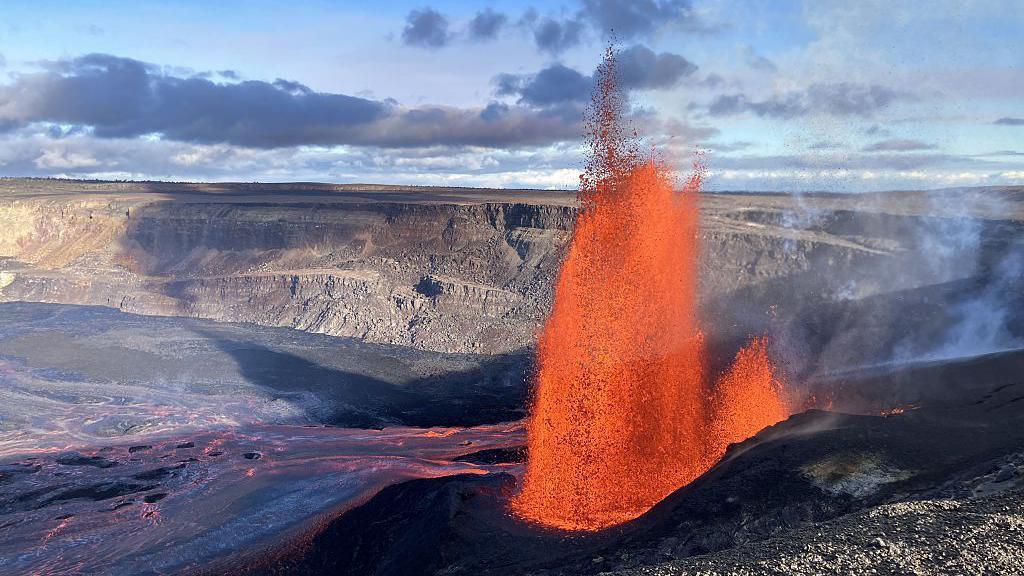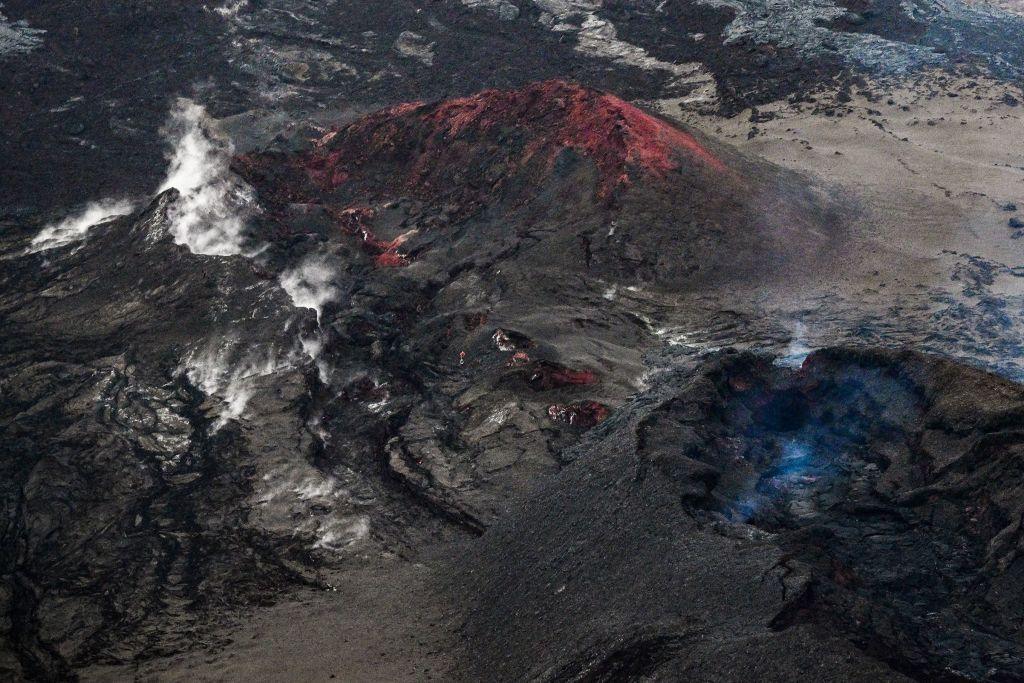One of the world's most active volcanoes erupts again in Hawaii
Watch: Lava soars 1,100ft above Hawaii’s Kilauea in latest eruption
- Published
One of the world's most active volcanoes has erupted again in Hawaii.
Footage from Mount Kilauea, on Hawaii's Big Island, showed fountains of lava being spraying 300 metres into the air.
The volcano is being closely monitored, and experts say the molten rock has been contained within the National Park.
Activity on Kilauea has been taking place regularly and according to the US Geological Survey, this is the 36th eruption episode since December 23, 2024.
More like this
Everything you need to know about volcanoes
- Published1 May 2024
The Big Question: Why do volcanoes erupt? Video, 00:01:06
- Published16 April 2021
What's happened?

Mount Kilauea has erupted several times in 2025 already, like this one in June
Kilauea is the most active volcano on Hawaii's Big Island.
There have been regular eruptions taking place there for the past forty years.
This latest eruption occurred over the weekend and saw lava shoot around 300 metres into the air, according to the United States Geological Survey.
The eruption took place over five hours and produced an estimated 8-9 million cubic metres of lava.
Why are there volcanoes on Hawaii?

Mauna Loa is the largest active volcano in the world
Kilauea is one of six active volcanoes located on the Hawaiian Islands, which also include Mauna Loa, the largest active volcano in the world.
Most volcanoes form on boundaries, where Earth's massive underground tectonic plates meet.
They're huge slabs of Earth's crust and upper mantle, which fit together like pieces of a puzzle.
These plates are not fixed but are constantly moving at a very slow rate.
The Big Question: Why do volcanoes actually erupt?
However, Hawaii is slightly different, as it doesn't sit on a plate boundary.
Instead, volcanoes have formed this long chain of islands because of the "Hawaiian hot spot".
A hot spot is made up of super-heated material deep inside the earth, located underneath one of these tectonic plates.
Here, magma - or molten rock - burns tunnels to the surface where it then creates a volcanic eruption.
